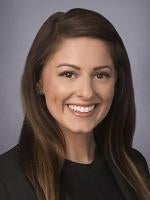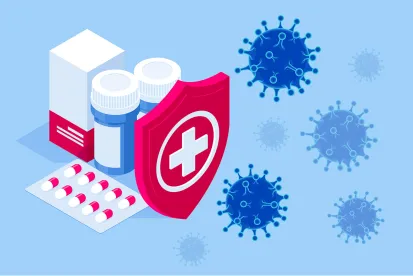On Friday, April 10, 2020, the Department of Health and Human Services (“HHS”) began distributing $30B of the $100B appropriated in the Coronavirus Aid, Relief, and Economic Security (“CARES”) Act to the Public Health and Social Services Emergency Fund (“PHSSEF”), also called the “CARES Act Provider Relief Fund”. HHS distributed the funds to providers based on their 2019 Medicare fee-for-service (“FFS”) reimbursement. We understand that $26B of this $30B have already been directly deposited into providers’ accounts. Many providers have questions about what happens next. We address the top ten questions here.
1. What if I didn’t receive any funds?
Only providers that received Medicare FFS reimbursement in 2019 are eligible for a portion of this initial $30B distribution. All relief payments are made to the billing organization according to its Taxpayer Identification Number.
If you did not bill Medicare FFS for items and services provided in 2019, you will not receive money from this distribution. For instance, employed physicians who reassigned their billing rights to their employer should not expect to receive an individual payment directly. Rather, the employer will receive the relief payment as the billing provider.
Providers who normally receive a paper check for reimbursement from CMS will receive a paper check in the mail within the next few weeks.
If you feel that you should have received funds already, you should contact your Medicare Administrative Contractor.
2. How did HHS calculate the payments?
Providers are receiving a portion of the initial $30B distribution based on their share of total Medicare FFS reimbursements in 2019. As total Medicare FFS payments approximated $484B in 2019, a provider should receive funds approximating 1/16th of its Medicare FFS reimbursements in 2019.
3. What about the other $70B appropriated by the CARES Act?
HHS stated that it intends to target future distributions, in part, to providers in areas particularly impacted by the COVID-19 outbreak, rural providers, providers of services with lower shares of Medicare FFS reimbursement or who predominantly serve the Medicaid population, and providers requesting reimbursement for the treatment of uninsured patients.
4. How do I know if the funds I received were from the PHSSEF or from CMS’ Accelerated Payment Program?
The PHSSEF payments made on April 10 were likely entitled “US HHS Stimulus” or “HHSPAYMENT”. These payments are a grant from the federal government and do not have to be paid back, as long as the recipient adheres to certain terms and conditions (see below).
Separately, CMS’ Accelerated Payment Program (“APP”) has issued advance payments to many providers who have requested such payments. The APP continues to receive and review applications for such payments, and continues to issue payments. Those advance payments are separate from the April 10 PHSSEF distributions, and constitute loans that providers must pay back within specified timeframes. For further information about the APP, see our post here.
5. Are there conditions on keeping these funds?
Yes. Within 30 days of receiving the funds, providers must sign an attestation confirming receipt of the funds and agreeing to the Terms and Conditions of payment. These terms and conditions should be reviewed closely. Generally, providers must certify that they will use the funds only to “prevent, prepare for, or respond to coronavirus”. However, providers who receive more than $150,000 in funds must submit quarterly reports detailing the use of funds (see question 8, below).
The portal for signing the attestation will be open the week of April 13, 2020, and will be linked at hhs.gov/providerrelief. If a provider receives funds and does not wish to comply with these Terms and Conditions, the provider must contact HHS within 30 days of receipt of payment and then remit the full payment to HHS as instructed. Appropriate contact information will be provided soon.
6. How can we spend these funds? Are there limitations?
The funds must be used to “prevent, prepare for, and respond to coronavirus… for health care related expenses or lost revenues that are attributable to coronavirus.” Consistent with these purposes, providers should have broad discretion in how they spend these funds. Examples of covered expenses identified in the CARES Act include, but are not limited to, “building or construction of temporary structures, leasing of properties, medical supplies and equipment including personal protective equipment and testing supplies, increased workforce and trainings, emergency operation centers, retrofitting facilities, and surge capacity.” However, providers may also use the funds to accommodate lost revenues attributable to the coronavirus. The CARES Act does not similarly provide examples of lost revenues attributable to the coronavirus.
In the briefing announcing the $30B disbursement, CMS Administrator Seema Verma said that “healthcare providers that are receiving these dollars can essentially spend that in any way that they see fit.” However, providers must certify that they will not use the funds to reimburse expenses or losses that have been reimbursed from other sources or that other sources are obligated to reimburse. The scope of this clause is not clear, but providers should consider identifying other sources of possible relief (such as insurance policies and outstanding commercial loans), segregating any funds obtainable (or already obtained) from such sources, and using the funds from such sources for non-overlapping expenses and lost revenues. If the provider subsequently receives reimbursement for expenses from any other source after receiving funding for the same expenses from the PHSSEF, the entity will be required to repay the funding it received from the PHSSEF. In addition, the Terms and Conditions prohibit the use of funds for excessive executive pay, gun control advocacy, abortion, lobbying, embryo research, promotion of legalization of controlled substances, pornography, human trafficking, and more.
7. Do I need to maintain records of how I spend these funds?
Yes. Providers must maintain records and documentation of how these funds are used. These records include, as applicable, documentation required by federal award financial management regulations (45 CFR § 75.302) and federal award record retention and access regulations (45 CFR §§ 75.361–75.365), as well as other information required by future program instructions to substantiate the reimbursement of costs under the PHSSEF. Records must be made available upon the request of the HHS Secretary and providers must agree to fully cooperate in all related audits.
8. What other requirements are there for using these funds?
Providers will be required to submit reports to ensure compliance with conditions imposed on the payment. It has not yet been determined what these reports will entail. However, any provider that receives more than $150,000 under any COVID-19 relief package must submit a quarterly report to the HHS Secretary and the Pandemic Response Accountability Committee that contains:
-
The total amount of funds received from HHS;
-
The amount of funds received that were expended or obligated for each project or activity;
-
A detailed list of all projects or activities for which large covered funds were expended or obligated, including the name and description of the project or activity and the estimated number of jobs created or retained by the project or activity, where applicable; and
-
Detailed information on any level of sub-contracts or subgrants awarded by the provider or its subcontractors or subgrantees, including the data elements required by the Federal Funding Accountability and Transparency Act of 2006.
9. Should I adopt a policy to help ensure compliance with these terms and conditions?
Any provider receiving funds should take appropriate steps to ensure compliance with the terms and conditions to which it must certify. However, as with any compliance program, there is no ‘one size fits all’ approach to compliance. The size, resources, and characteristics of a provider, as well as the amount of emergency relief funds it receives through the PHSSEF and other sources, are important considerations as to whether the adoption and implementation of a formal policy is prudent or warranted.
10. If I retain and/or use these funds, does it make me ineligible for a PPP loan or a loan under the Main Street Lending Program? What if I have already applied?
Recipients of funds from the PHSSEF are not precluded from receiving loans, grants, or other forms of relief under the Paycheck Protection Program (Title I) (“PPP”), the economic stabilization and assistance provisions of Title IV (including the Main Street Lending Program that the Federal Reserve announced on April 9, 2020 (the “MSLP”)), or the APP (Title III). Even if qualified expenses are eligible for reimbursement from another mechanism, an entity may still apply for funding from the PHSSEF while simultaneously applying for funding from these other sources.
Borrowers are eligible to receive funds under Title IV (e.g., the MSLP) if they have “not otherwise received adequate economic relief in the form of loans or loan guarantees provided under this Act” (emphasis added). Under a strict reading of the CARES Act, PHSSEF funds are not “loans or loan guarantees”. However, a borrower should expect a holistic look at its requested amount under Title IV, as it must show continued need in order to be eligible for Title IV loans, and the receipt of PHSSEF funds may impact a provider’s needs analysis.
This article is not an unequivocal statement of the law, but instead represents our best interpretation of where things currently stand. This article does not address the potential impacts of the numerous other local, state and federal orders that have been issued in response to the COVID-19 pandemic, but which are not referenced in this article




 />i
/>i
